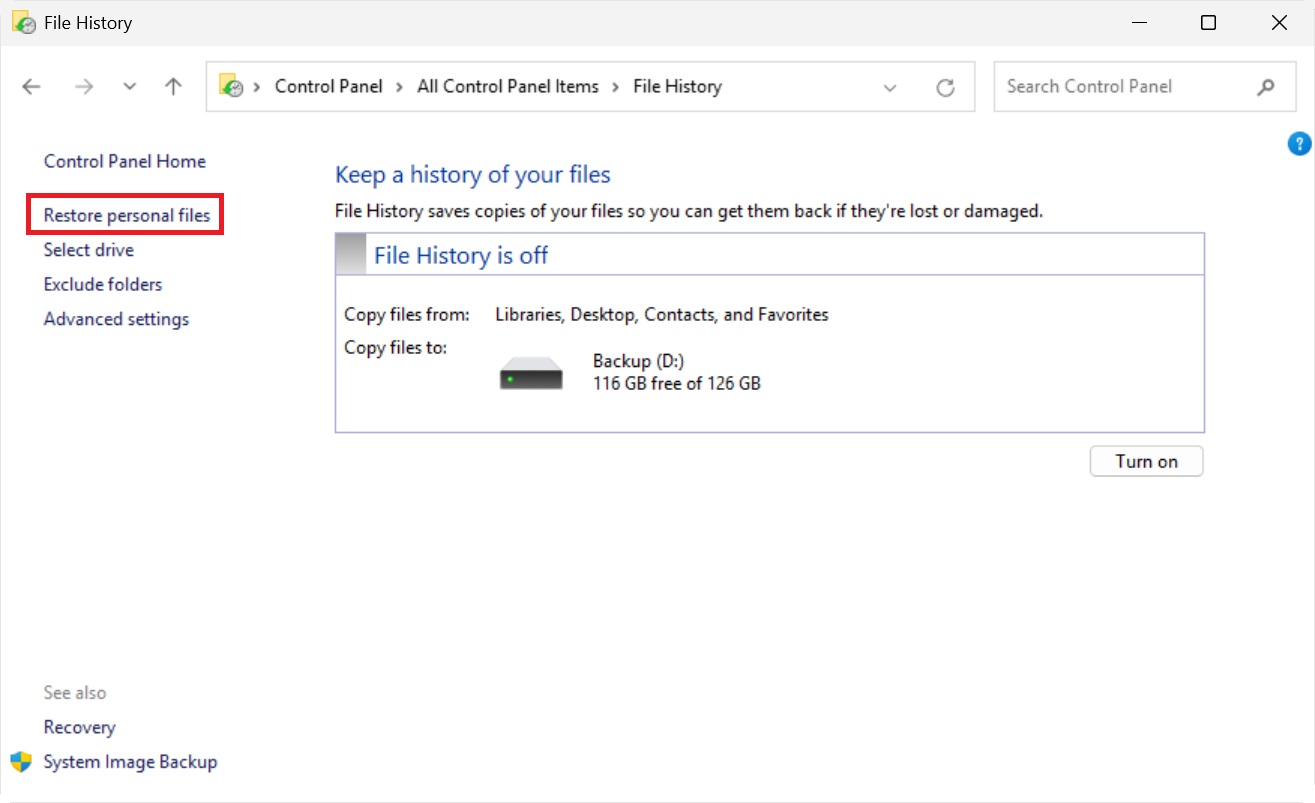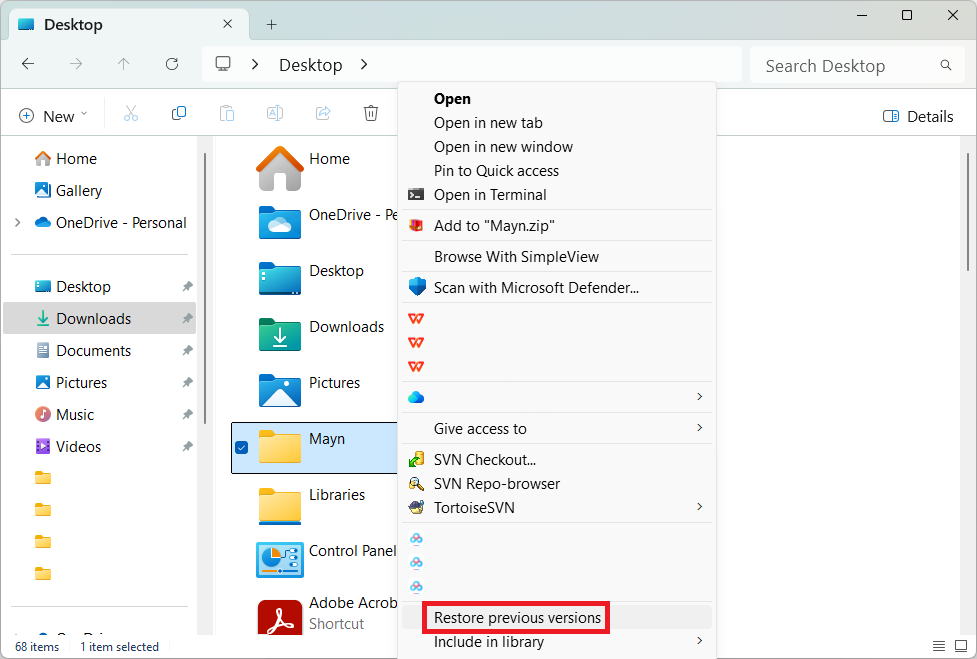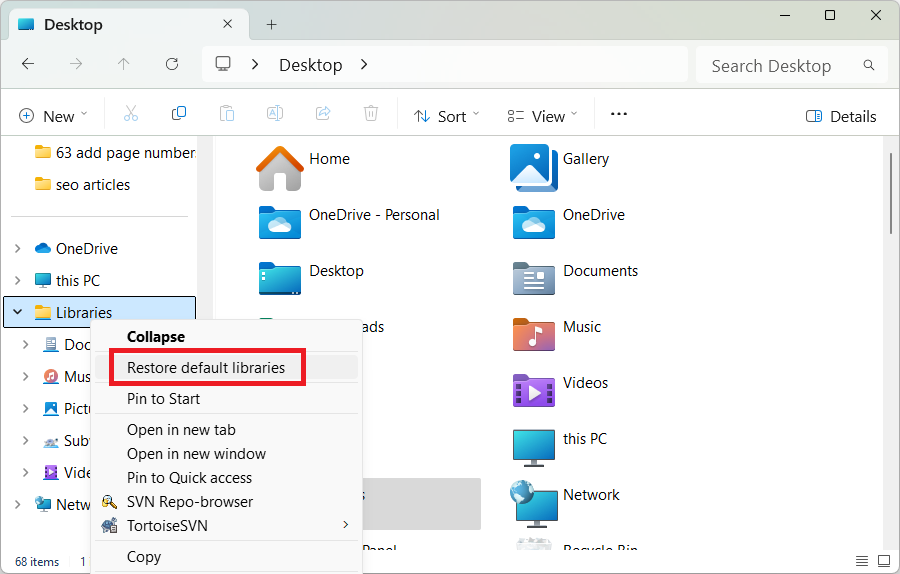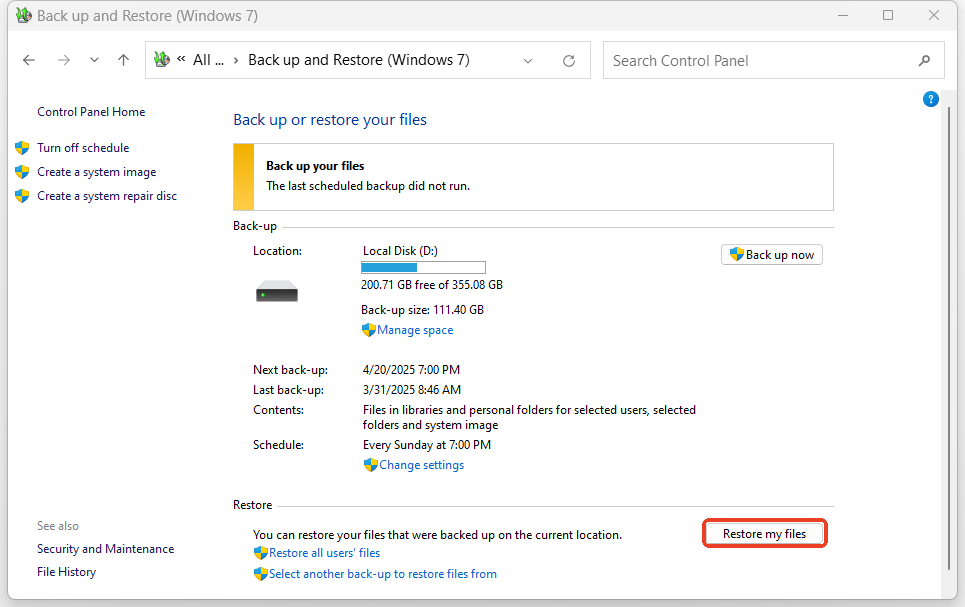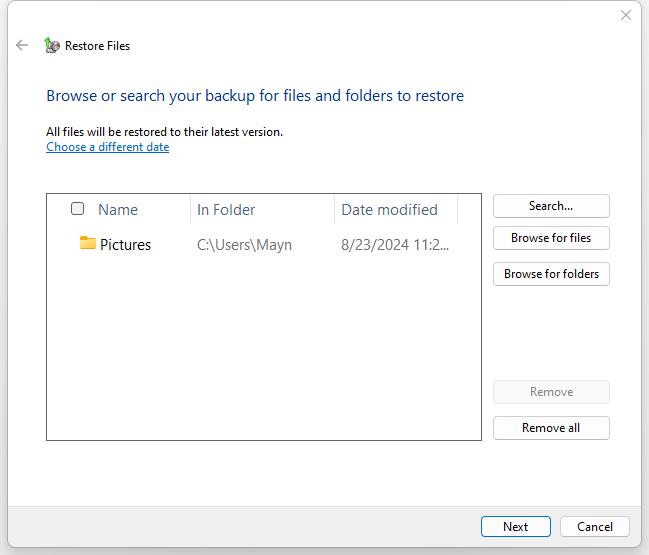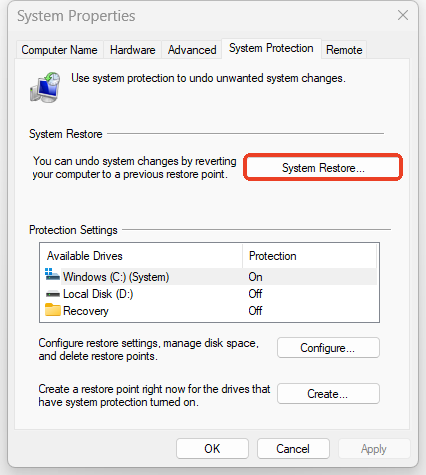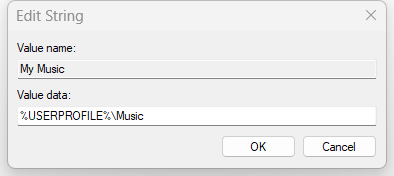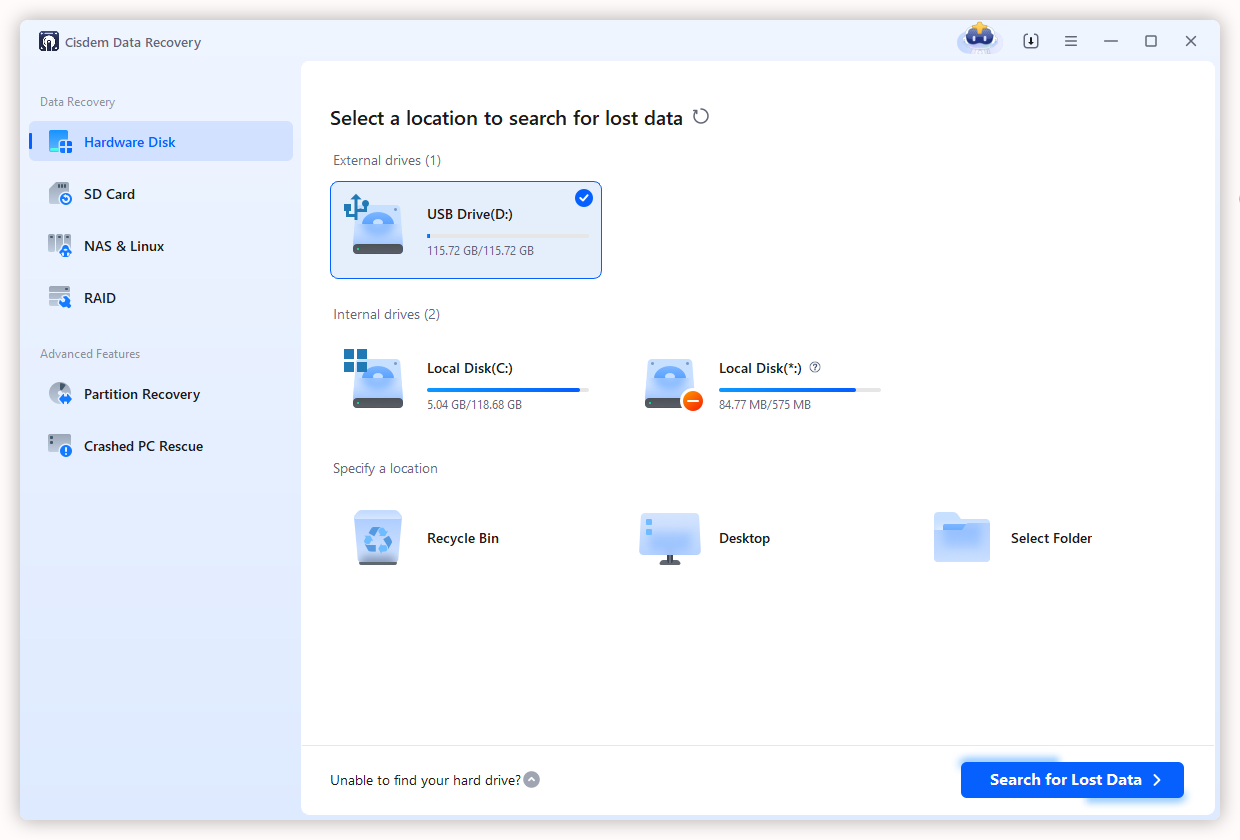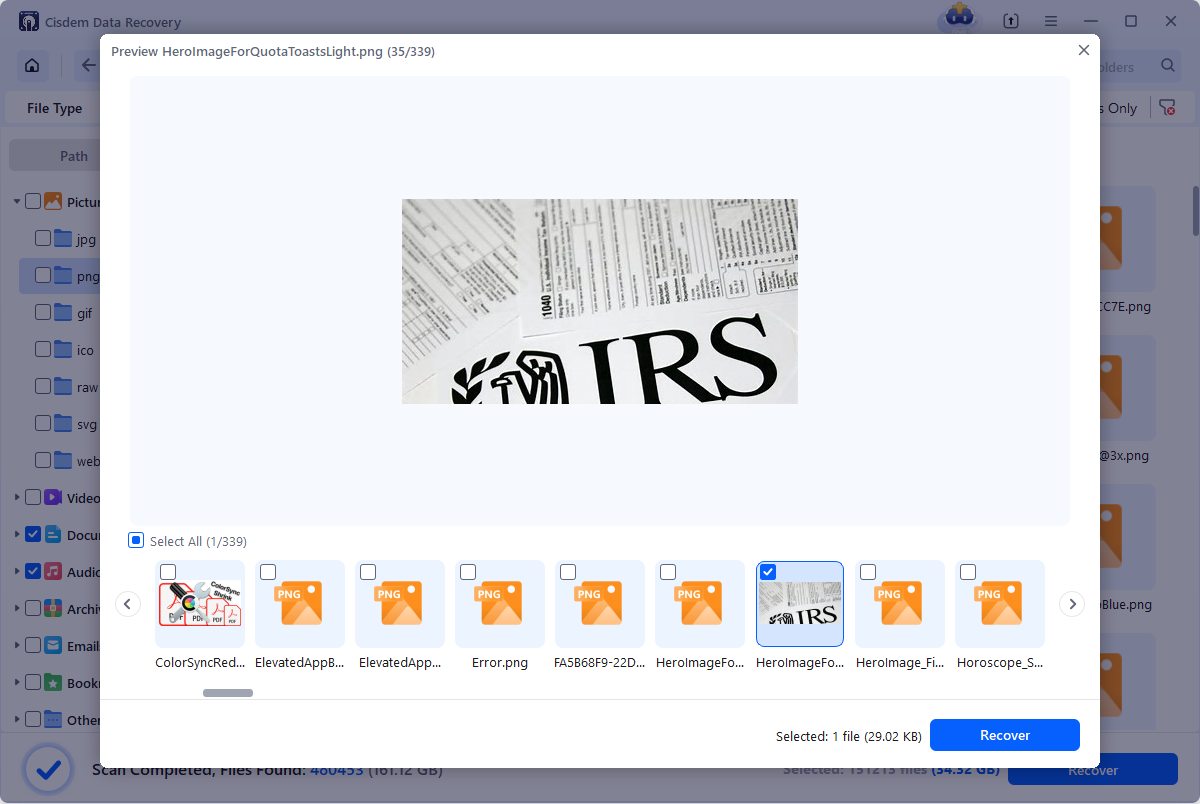7 Fixes to Restore Music Picture Document Folders on Windows 11/10
 461
461
 0
0
Windows has some built-in special system folders in user profile directory, including Music, Pictures, Documents, Videos and Downloads. They are used to well organize and quickly access files, such as images, audios and documents.
However, frustrating things sometimes occur that you accidentally deleted them, or lost them after a system update. Don’t be panic, recovery is possible.
In this guide, you’ll learn 7 proven methods to restore music, pictures and documents folders on Windows 11/10 (also work for older versions), from simple recycle bin tricks to advanced recovery software.
 Cisdem Data Recovery for Windows and Mac
Cisdem Data Recovery for Windows and Mac
Deep Scan & Restore Lost Music/Pictures/Documents Folders
- Restore deleted and lost music, pictures, documents and videos files from user profile folders.
- Recover missing files from internal drives, a specific location and external storage devices.
- Repair corrupted photos, videos and even documents.
- Get back data from permanent deletion, system crash, drive formatting, etc.
- Useful features: deep scan, filter files, preview lost files and export results.
- Compatible with Windows 11/10/8/7.
 Free Download Windows 10 or later
Free Download Windows 10 or later Free Download macOS 10.15 or later
Free Download macOS 10.15 or later
Where Are Music Picture Document Folders on Windows?
By default, audio files are stored in the “Music” folder, image files in the “Pictures” folder and document files in the “Documents” folder.
To find these folders, press “Windows + E” keys to open File Explorer, then you can view them under the “Libraries” tab. 
If you can’t find the “Libraries” tab, it is probably hidden and needs to be enabled. You can expand “See more” drop-down menu and select “Options”. In the Folder Options dialog box, go to the “View” tab > tick the “Show libraries” box, finally click “Apply” button. Then you will see the “Libraries” tab on the left navigation pane.
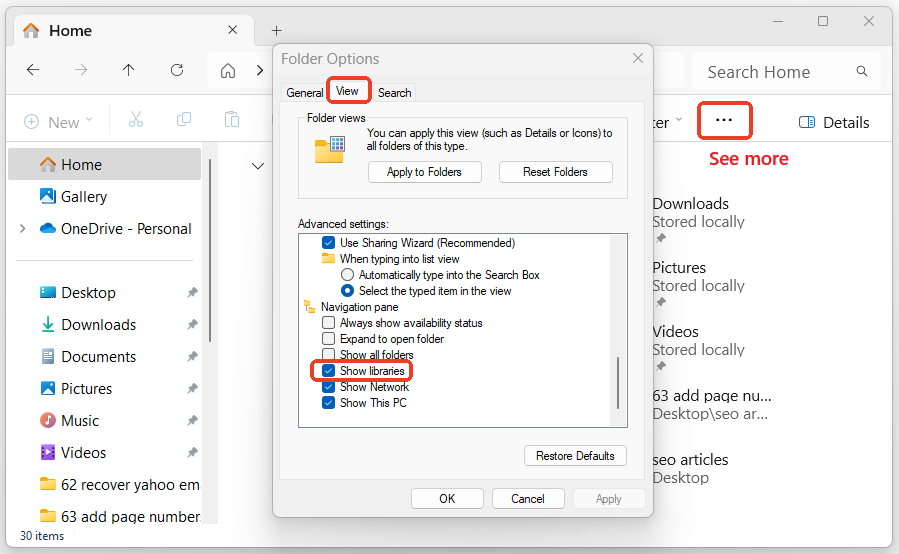
Built-in Methods to Restore Music Picture Document Folders on Windows 11/10
However, these system folders might go missing due to accidental deletion, system updates, malware attacks, drive corruption, virus attacks and more. If you’re trapped in such a situation, here are 6 actionable methods to restore music, pictures and documents folders on Windows 11/10.
Method 1: Restore from the Recycle Bin
When to Use: You recently deleted the folders and didn’t empty the Recycle Bin.
Detailed Steps:
- Open the Recycle Bin on your Windows.
- Scroll down to find the lost folders. Alternatively, type the keywords in the search box.
- Right click on the folder and restore it.
- The folders will return to their original location in your user profile.
![restore music picture document folders windows bin01]()
![]() Limitation: It fails if you pressed “Shift + Delete” or emptied the Recycle Bin.
Limitation: It fails if you pressed “Shift + Delete” or emptied the Recycle Bin.
Method 2: Restore via File History
When to Use: You turned on File History before the folders went lost, so it can automatically save copies of your libraries, desktop, contacts and favourite to the connected drive.
Detailed Steps:
- Search and run File History in the Windows Start menu.
- Click Restore personal files in the Control Panel wizard.
- Find your desired folders and versions to restore. It can go back to its original location or a new location.
![restore music picture document folders windows history01]()
(Previous Versions) Alternative steps:
- Press “Windows + E” keys to activate File Explorer.
- Choose the folder that contains your missing files, right click on it and select Show more options.
- Then click Restore previous versions, choose a desired version and restore it.
![restore music picture document folders windows history02]()
![]() Limitation: File History must have been set up with an external drive or a network location.
Limitation: File History must have been set up with an external drive or a network location.
Method 3: Restore Default Libraries
When to Use: You accidentally removed a library from File Explorer, for example, deleted the Music, Pictures or Documents library. Or, you have modified library settings and want to revert them to defaults.
Detailed Steps:
- Open File Explorer on your Windows.
- Right click on the Libraries tab in the navigation pane.
- Click Show more options > Restore default libraries to recreate the default folders, including Music, Pictures and Documents.
![restore music picture document folders windows default]()
![]() Limitation: This option can only reset the virtual libraries to their default settings, but does not affect the physical folders on Windows, let alone recover deleted folders and data.
Limitation: This option can only reset the virtual libraries to their default settings, but does not affect the physical folders on Windows, let alone recover deleted folders and data.
Method 4: Restore from Windows Backup
When to Use: You created a system backup via Windows Backup and Restore before. This feature in Windows 7 has been deprecated in newer versions of Windows, but is still available and supported in Windows 10 and 11.
Detailed Steps:
- Open Control Panel from Windows Start menu.
- Select Back up and Restore (Windows 7) tool.
![restore music picture document folders windows backup01]()
- Choose a back-up location that contains Music, Pictures and Documents folders, click Restore my files.
![restore music picture document folders windows backup02]()
- Browse or search backups for needed folders and restore them to their original location or a specified location.
![restore music picture document folders windows backup03]()
![]() Limitation: Windows backup can restore the lost folders to their latest version. You should turn on schedule to run back-up regularly.
Limitation: Windows backup can restore the lost folders to their latest version. You should turn on schedule to run back-up regularly.
Method 5: Create a System Restore Point
When to Use: Your folders disappeared after software install, a system update or crash. System Restore can revert your system to a previous state before the issue occurred.
Detailed Steps:
- Type Create a restore point in the Windows search bar and open it.
- Under the System Protection tab, click System Restore.
![restore music picture document folders windows point01]()
- Choose a System Image Restore Point and follow the wizards to restore your computer to an earlier state.
![restore music picture document folders windows point02]()
![]() Limitation: This action will affect the whole Windows operating system files and settings, not just user folders (including Music, Pictures and Documents).
Limitation: This action will affect the whole Windows operating system files and settings, not just user folders (including Music, Pictures and Documents).
Method 6: Recreate Missing Folders via Registry
When to Use: You’ve accidentally moved or modified the location of Music, Pictures and Documents folders, or they are no longer visible because of malware or system errors.
Detailed Steps:
- Press the “Windows + R” keys to open the Run dialog box.
- Type “regedit” and continue with OK.
![restore music picture document folders windows run01]()
- In the Registry Editor window, navigate to User Shell Folders: Computer\HKEY_CURRENT_USER\Software\Microsoft\Windows\CurrentVersion\Explorer\User Shell Folders.
![restore music picture document folders windows run02]()
- In the User Shell Folders key, find values for the missing folders. Double click on them and change the Value data field to the default path.
Documents: %USERPROFILE%\Documents
Pictures: %USERPROFILE%\Pictures
Music: %USERPROFILE%\Music![restore music picture document folders windows run03]()
- Save the changes and restart your computer to take effect.
![]() Limitation: This method can only change the path of missing folders, while files actually exist in hidden locations.
Limitation: This method can only change the path of missing folders, while files actually exist in hidden locations.
Data Recovery Tool to Recover Lost System Folders on Windows
It is best if the missing folders can be found through the above methods. But things don't always work out that way. Your computer may not be backed up, or the aforementioned fixes are complex and error-prone, if so, using third-party data recovery software is the last resort.
Cisdem Data Recovery for Windows
Cisdem Data Recovery is a full-scale data recovery program that can get back lost files from any storage devices, and under any data loss scenarios. It offers a scan mode to quick and deep scan the whole device and drives for missing folders.
This powerful tool can recover a wide range of file types, including audios, pictures, documents and videos. Far beyond recovery, it can repair corrupted photos and videos if the restored files cannot be opened normally.
When to Use: All else fails. You haven’t enabled system backup features, and your files have gone missing due to permanent deletion, drive formatting and corruption, system crash, etc.
Step-by-Step Guide on How to Restore Music Pictures Documents Folders on Windows
- Download and install the program of Cisdem Data Recovery software.
 Free Download Windows 10 or later
Free Download Windows 10 or later Free Download macOS 10.15 or later
Free Download macOS 10.15 or later - Run the software. Choose Select Folder and specify the folder you want to recover data from.
![restore music picture document folders windows cisdem01]()
- The program will start scanning the selected folder for lost data.
- You can search your desired files through the search box, or use the Filter tool to filter documents.
![restore music picture document folders windows cisdem02]()
- It supports previewing the files before recovering.
![restore music picture document folders windows cisdem03]()
- Finally, click Recover and select a destination path to store recovered files.
![]() Limitation: It requires an extra download and installation. And you should avoid saving new data to the faulty drive to maximize the recovery success.
Limitation: It requires an extra download and installation. And you should avoid saving new data to the faulty drive to maximize the recovery success.
To Sum up
When you find that your music pictures documents folders have disappeared, you should first start with the easiest way --- recycle bin. And then if backups exist, use File History, Previous Versions, or Windows Backup and Restore. If there is no backup, try a dedicated data recovery application such as Cisdem Data Recovery for a complete scan. Of course, if you’re lucky that you only lost folder structure instead of actual files, restore the default libraries or recreate missing folders via registry.

Zoey shows a great interest in what she does. Although not long with Cisdem, she has possessed a professional understanding of data recovery.

JK Tam is the lead developer at Cisdem, bringing over two decades of hands-on experience in cross-platform software development to the editorial team. He is now the lead technical approver for all articles related to Data Recovery and DVD Burner.





